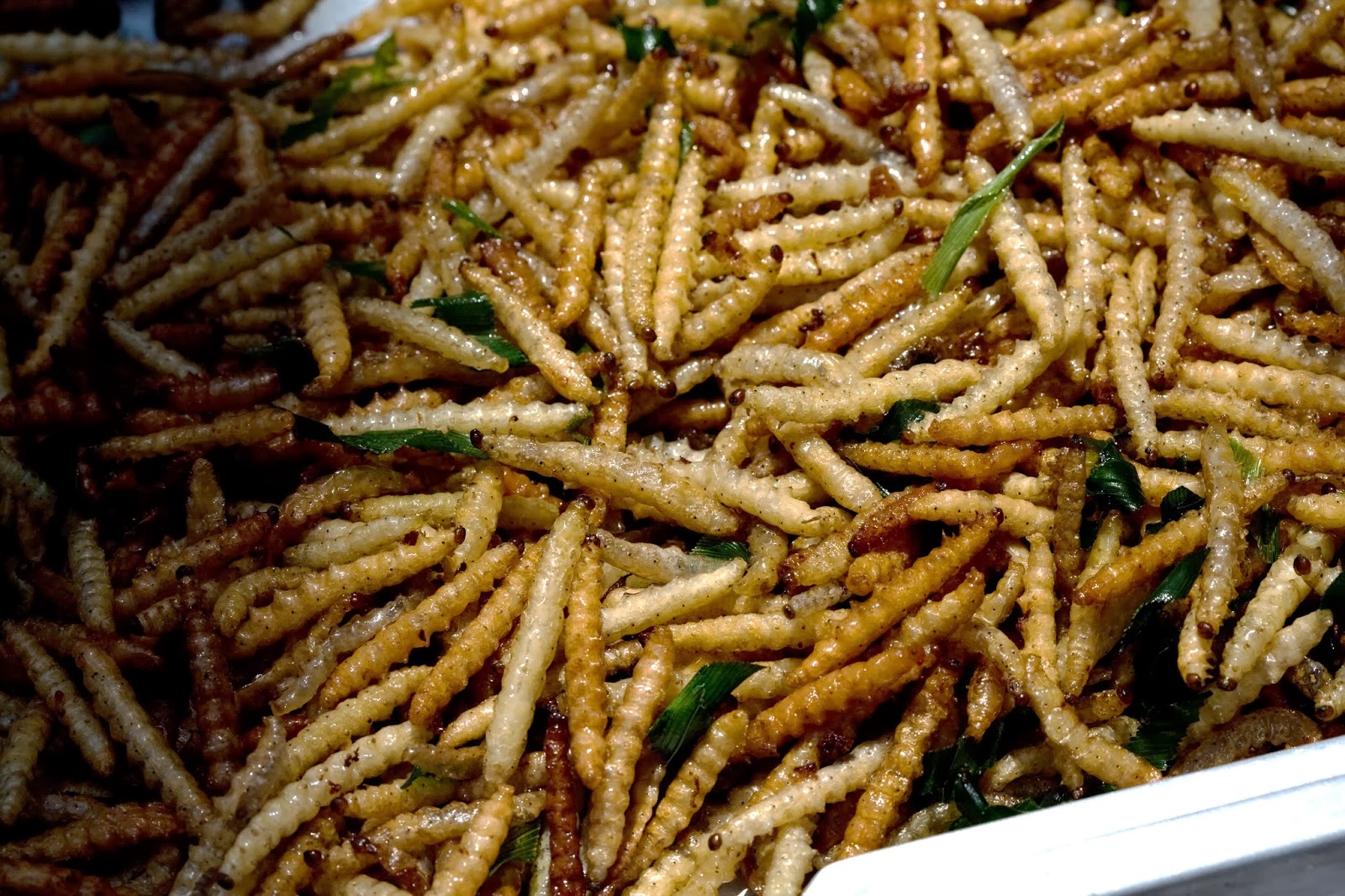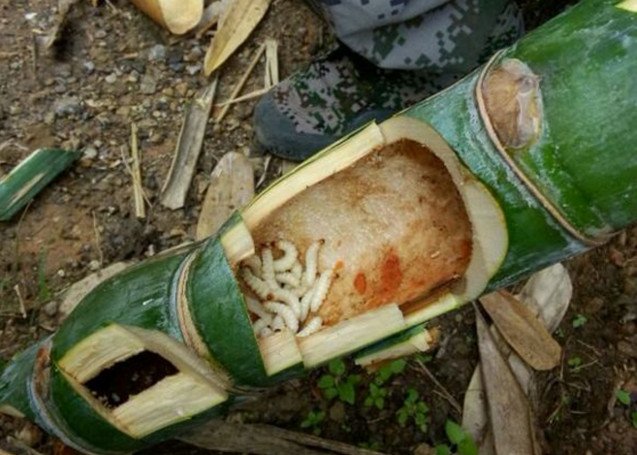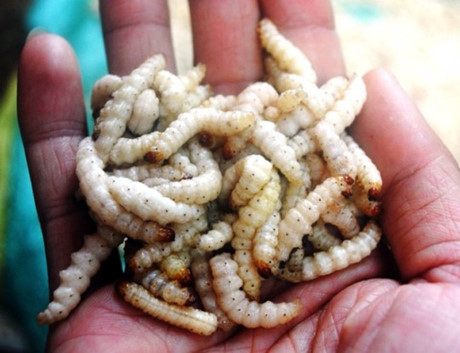Savouring rare dish of bamboo worm in Vietnam
(VNF) - For the Dao Do (Red Dao) ethnic group in the northern province of Ha Giang or the Muong in the central province of Thanh Hoa, sau tre (bamboo worm), once a staple, has become a rare treat.
Only elders in these two ethnic minority communities residing mostly in the northern and central provinces know how to collect the worm and make tasty dishes with it.
When the meal was served, besides the traditional dishes like steamed cassava pie and fried mountain snail, there was a plate of stir-fried sau tre and a bowl of sau tre soup.
 |
Once it is cooked, sau tre takes on a golden colour. The worm looked like a chrysalis, somewhat smaller. Despite the eye-catching decoration and colour, many people were still afraid of tasting the dish.
It was succulent, juicy, and the herbs used had blended well with it.
There are different ways to cook sau tre. It could be deep fried, steamed or braised, but the most popular dish was sau tre stir fry.
The worms are washed and cleaned carefully, seasoned with salt and set aside for 15 minutes. Fat (lard or oil) is heated in a pan, and shallots as well as the worms are added to it. After stir-frying for about three minutes, when the worms taken on a light golden colour, finely chopped lime leaves are added. A quick stir-fry and the dish is served immediately.
The mild scent of the bamboo, the strong flavour of sau tre and the light bitterness of lime leaves make for a special, tasty dish perfect to enjoy on cold and humid days.
Sau tre was a special dish for mountainous communities. People began collecting them when they lived mostly of the land, and food became scarce.
As other food became more easily available in the market, sau tre was no longer a must. Young people soon forgot how to collect and cook it. Also, sau tre requires a lot of ingredients, additives, and several steps are involved, from collecting it to preparing it and cooking it. It can even take more than a day to serve a sau tre dish.
The bamboo worm season normally lasts from September till the end of October, during which the worms are the fattest and breed the most. Old people could tell with just a glance which was the right bamboo to find the worms in. But for young people now, it also depends on their luck.
 |
To collect sau tre, a knife and a basket are the tools required. People look for dry and almost dead bamboo grass, chop them down then empty the stalks to get the worms inside.
 |
On a lucky day, one can get 1 to 1.5 kg of sau tre. The worm is white and 3.5 to 4cm long.
In Vietnam, this special worm can be found in the northern mountainous provinces of Dien Bien, Lai Chau, Son La and Ha Giang or central provinces like Thanh Hoa and Thua Thien-Hue.
Even during the breeding season, it is not easy to get them, because not every bamboo section will carry them. However, the rarer the insect is, the higher its price on the market.
During its season, prices for this mountain specialty can go be up to VND 500 (USD 23) per kilo, but supply still fails to meet rising demand. People have to order about a week in advance to be served this dish.
Another factor that raises the price of bamboo worm is difficulties in transporting them.
Delivering the bamboo worm alive is hard to do. And if they are not careful enough, the worms will die so the dishes will not be as tasty as expected. But for those who have taken to them, all the trouble taken, and the price, is worth it./.
( Compiled by VNF )
Recommended
 Viet's Home
Viet's Home
Scholarships Gift to over 600 Disadvantaged Students in Hue City
 Viet's Home
Viet's Home
Thanh Hoa, World Vision Work on Various Projects to Support Vulnerable Groups
 Viet's Home
Viet's Home
Save the Children: Improving Reproductive Health, Paving Way for Sustainable Future
 Viet's Home
Viet's Home
50 Years of National Reunification: Inspiring Revolutionaries Worldwide
Popular article
 Viet's Home
Viet's Home
Psychological Counseling Room: When School Becomes Place of Healing
 Vietnamese Herbal Tea
Vietnamese Herbal Tea
Number One Affirms Energetic Spirit at "Enduring Passion" Award
 Viet's Home
Viet's Home
Zhi Shan Foundation Supports Libraries and Books for Quang Ngai Students
 Viet's Home
Viet's Home



